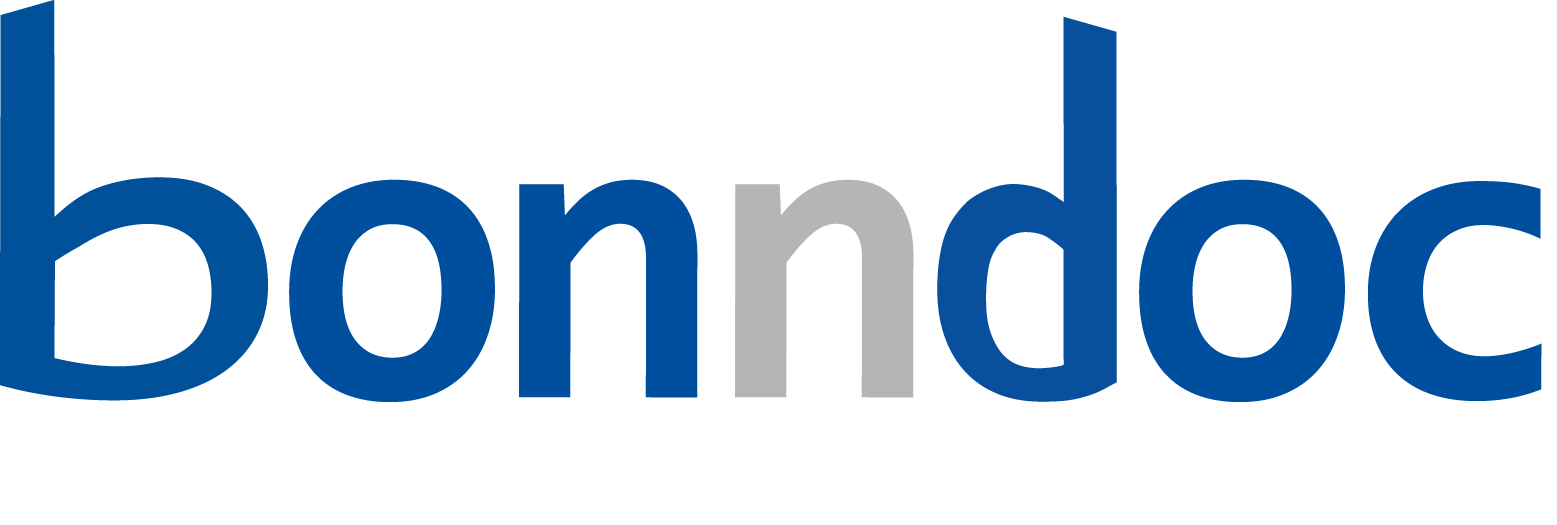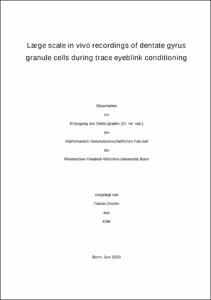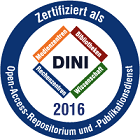Distler, Fabian: Large scale in vivo recordings of dentate gyrus granule cells during trace eyeblink conditioning. - Bonn, 2024. - Dissertation, Rheinische Friedrich-Wilhelms-Universität Bonn.
Online-Ausgabe in bonndoc: https://nbn-resolving.org/urn:nbn:de:hbz:5-74090
Online-Ausgabe in bonndoc: https://nbn-resolving.org/urn:nbn:de:hbz:5-74090
@phdthesis{handle:20.500.11811/11371,
urn: https://nbn-resolving.org/urn:nbn:de:hbz:5-74090,
author = {{Fabian Distler}},
title = {Large scale in vivo recordings of dentate gyrus granule cells during trace eyeblink conditioning},
school = {Rheinische Friedrich-Wilhelms-Universität Bonn},
year = 2024,
month = feb,
note = {The dentate gyrus (DG) is known to play a role in associative learning, but the precise contribution of individual granule cells (GC) to this process remains unclear. In this study, we established a head-fixed trace eyeblink conditioning (tEBC) task that enabled simultaneous calcium imaging of the DG GC population to investigate their role in learning.
Using longitudinal tracking of individual cells, we identified specific stimuli responses in a subgroup of the imaged GC population that were higher than chance but found that these responders were relatively unstable over time. Moreover, we observed sizeable synchronous population activity of the dentate GCs, referred to as network events, which grew in size during training sessions and had a significantly higher proportion of task-responding cells compared to nonresponders during late learning. Responder cells were also more likely to participate in network events with other responder cells.
To address critical questions regarding the role of the DG in tEBC, we investigated the necessity of the DG GCs and examined how task-associated activity and synchronous offline activity changed during learning. Our results demonstrated that the DG GCs are essential for tEBC and that the activity of these cells changes over time, with synchronous offline activity increasing during training sessions. Overall, this study provides novel insights into the role of the DG GCs in associative learning, highlighting the importance of network events and individual cell responses during tEBC. The findings contribute to a better understanding of the neural mechanisms underlying associative learning and have implications for developing therapies for disorders affecting learning and memory.},
url = {https://hdl.handle.net/20.500.11811/11371}
}
urn: https://nbn-resolving.org/urn:nbn:de:hbz:5-74090,
author = {{Fabian Distler}},
title = {Large scale in vivo recordings of dentate gyrus granule cells during trace eyeblink conditioning},
school = {Rheinische Friedrich-Wilhelms-Universität Bonn},
year = 2024,
month = feb,
note = {The dentate gyrus (DG) is known to play a role in associative learning, but the precise contribution of individual granule cells (GC) to this process remains unclear. In this study, we established a head-fixed trace eyeblink conditioning (tEBC) task that enabled simultaneous calcium imaging of the DG GC population to investigate their role in learning.
Using longitudinal tracking of individual cells, we identified specific stimuli responses in a subgroup of the imaged GC population that were higher than chance but found that these responders were relatively unstable over time. Moreover, we observed sizeable synchronous population activity of the dentate GCs, referred to as network events, which grew in size during training sessions and had a significantly higher proportion of task-responding cells compared to nonresponders during late learning. Responder cells were also more likely to participate in network events with other responder cells.
To address critical questions regarding the role of the DG in tEBC, we investigated the necessity of the DG GCs and examined how task-associated activity and synchronous offline activity changed during learning. Our results demonstrated that the DG GCs are essential for tEBC and that the activity of these cells changes over time, with synchronous offline activity increasing during training sessions. Overall, this study provides novel insights into the role of the DG GCs in associative learning, highlighting the importance of network events and individual cell responses during tEBC. The findings contribute to a better understanding of the neural mechanisms underlying associative learning and have implications for developing therapies for disorders affecting learning and memory.},
url = {https://hdl.handle.net/20.500.11811/11371}
}






